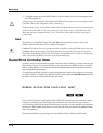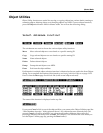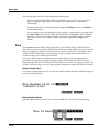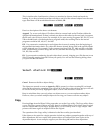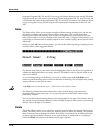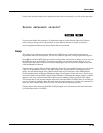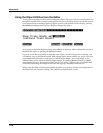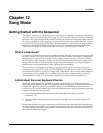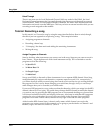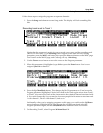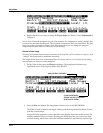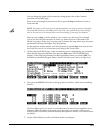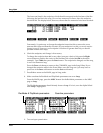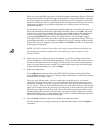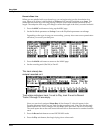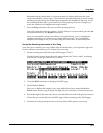
12-2
Song Mode
Getting Started with the Sequencer
Patch Through
There’s one more use for Local Keyboard Channel. With any model of the K2661, the Local
Keyboard Channel parameter lets you patch through (also known as soft through) to external
sound modules. When Local Keyboard Channel is enabled, the K2661 takes the rechannelized
information and sends it out the MIDI port. This lets you hear an external module while you are
recording a track assigned to that module.
Tutorial: Recording a song
In this tutorial, we’ll record a song by using the steps described below. Bear in mind, though,
that this is just one approach to sequencing a song. This example includes:
• Assigning programs to channels
• Recording a drum loop
• “Unlooping” the drum track and adding the remaining instruments
• Mixing the song
Assign Programs to Channels
Start by deciding what instruments you want to use in the song. Suppose you want to record a
bass /drums / organ rhythm track with a lead instrument on top. You’ve decided to use the
programs such as the following:
• 54 Jazz Kit II
• 30 Warm Bass 1^2
• 22 Gospel Organ
• 79 Modulead
Set up your K2661 so that each of these instruments is on a separate MIDI channel. Since Song
mode automatically assigns each channel to a separate sequencer track (1-16, consecutively),
you’ll then be all set when you start laying down tracks, and won’t have to go scrolling through
the program list. Don’t worry about changing your mind later, though, since you can always
make changes after you’ve recorded your initial tracks.
If you use a KB3 program in a song, make sure that the channel to which you assign it is the KB3
channel; otherwise it won’t play. You could always change the KB3 channel to match the channel
you want to use for recording the KB3 program, but we recommend deciding on a channel that
will always be the KB3 channel, and keeping it that way. Also keep in mind that KB3 programs
require one voice of polyphony for every two tone wheels in the program. Since most KB3
programs use at least 79 tone wheels, that leaves only eight voices free for other programs.
Aside from the KB3-channel issue, it doesn’t really matter which channel you use for the
programs you want to record. In this example, we’re going to put the drums on Channel 1 and
the bass, organ, and lead on Channels 2, 3, and 4.



